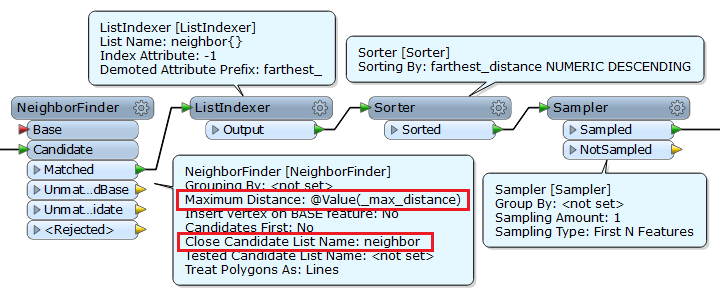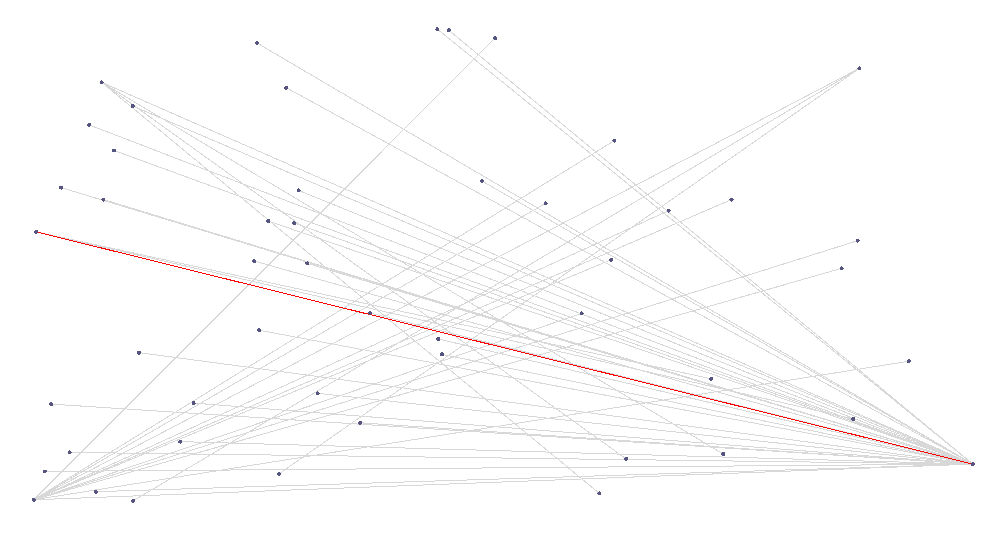I've fed the dataset through a chopper and coordinate extractor with a point replacer to get the vertices.
Now i need to measure every single distance between all points in the dataset to find the maximum ditance between any two points in the dataset. I've tried every possible combination of transformers, but no luck.
No one else seems to have the same problem either, because after about four hours of googling and testing, I've been able to measure a whole lot of things, but not what I really want to measure.
Using the length calculator has proven to be the best shot so far, but the problem I'm facing is that the length calculator takes the vertex with the highest node number and measures the distance from that point to every other point.
Basically I would like to do the same for every point in the dataset. Any suggestions?









